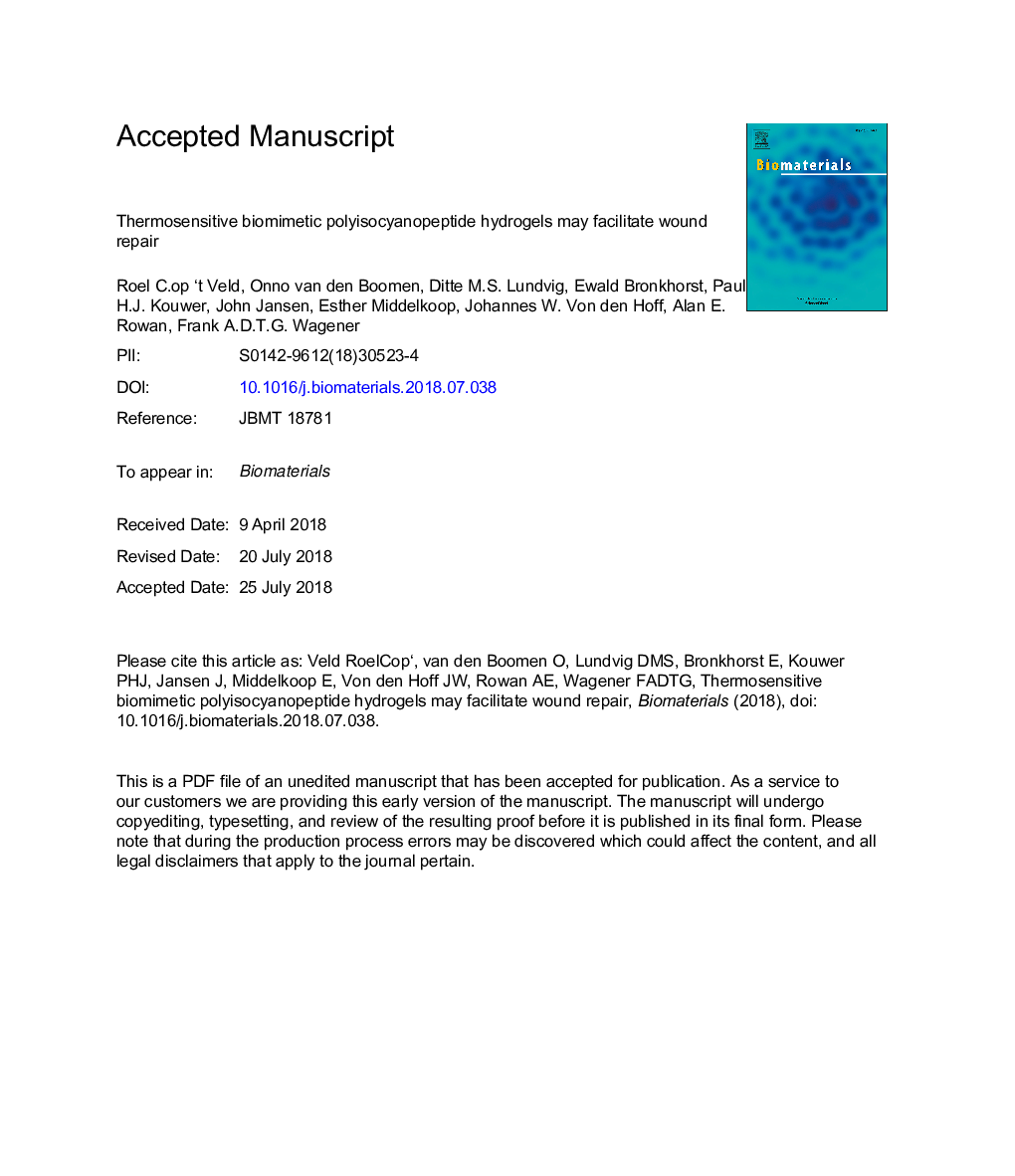| Article ID | Journal | Published Year | Pages | File Type |
|---|---|---|---|---|
| 6484304 | Biomaterials | 2018 | 34 Pages |
Abstract
Changing wound dressings inflicts pain and may disrupt wound repair. Novel synthetic thermosensitive hydrogels based on polyisocyanopeptide (PIC) offer a solution. These gels are liquid below 16â¯Â°C and form gels beyond room temperature. The architecture and mechanical properties of PIC gels closely resemble collagen and fibrin, and include the characteristic stiffening response at high strains. Considering the reversible thermo-responsive behavior, we postulate that PIC gels are easy to apply and remove, and facilitate healing without eliciting foreign body responses or excessive inflammation. Biocompatibility may be higher in RGD-peptide-functionalized PIC gels due to enhanced cell binding capabilities. Full-thickness dorsal skin wounds in mice were compared to wounds treated with PIC gel and PIC-RGD gel for 3 and 7 days. No foreign body reactions and similar wound closure rates were found in all groups. The level of macrophages, myofibroblasts, epithelial migration, collagen expression, and blood vessels did not significantly differ from controls. Surprisingly, granulocyte populations in the wound decreased significantly in the PIC gel-treated groups, likely because foreign bacteria could not penetrate the gel. RGD-peptides did not further improve any effect observed for PIC. The absence of adverse effects, ease of application, and the possibilities for bio-functionalization make the biomimetic PIC hydrogels suitable for development into wound dressings.
Related Topics
Physical Sciences and Engineering
Chemical Engineering
Bioengineering
Authors
Roel C. op 't Veld, Onno I. van den Boomen, Ditte M.S. Lundvig, Ewald M. Bronkhorst, Paul H.J. Kouwer, John A. Jansen, Esther Middelkoop, Johannes W. Von den Hoff, Alan E. Rowan, Frank A.D.T.G. Wagener,
